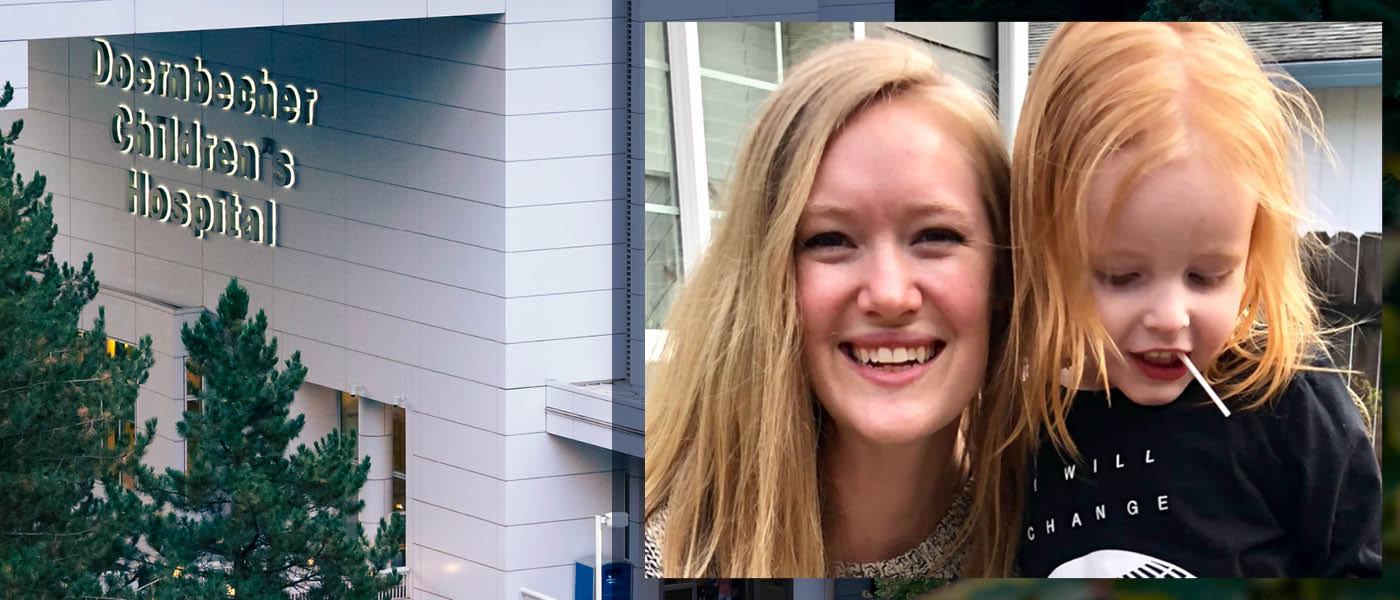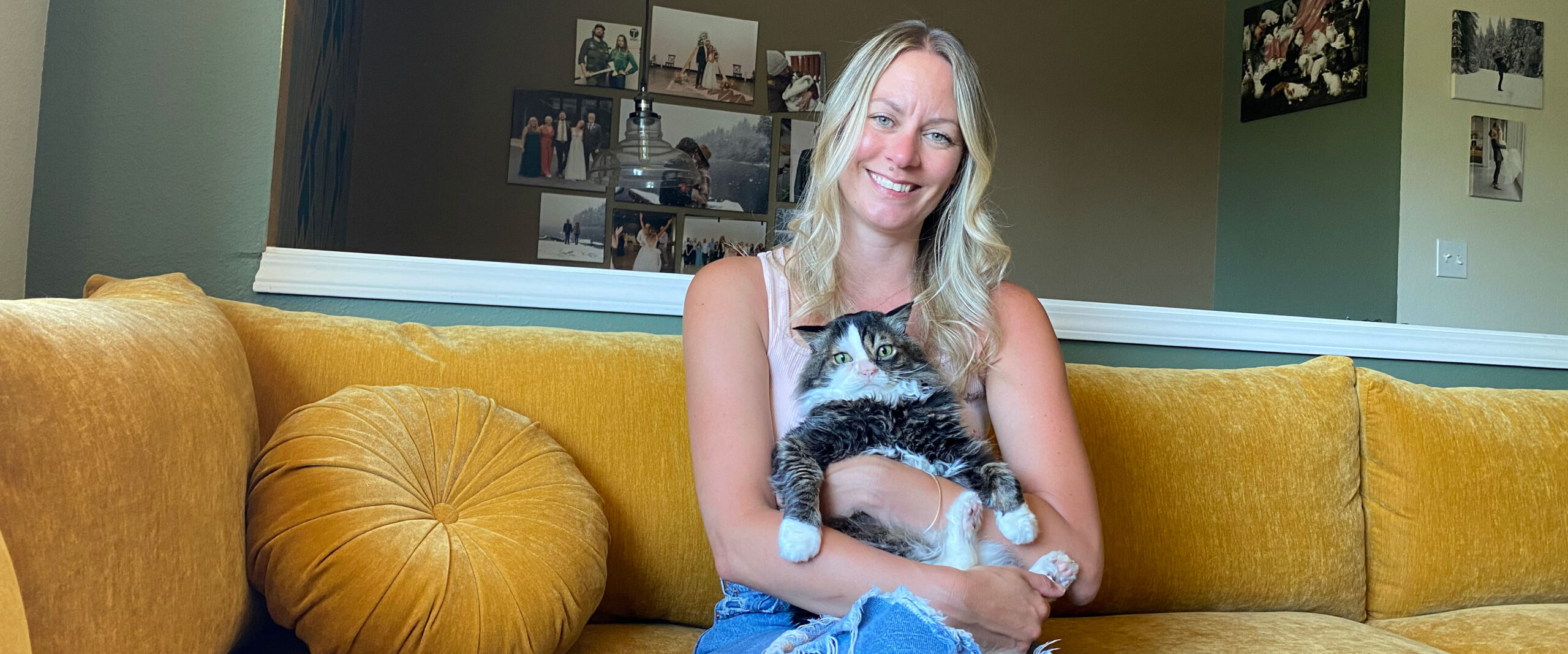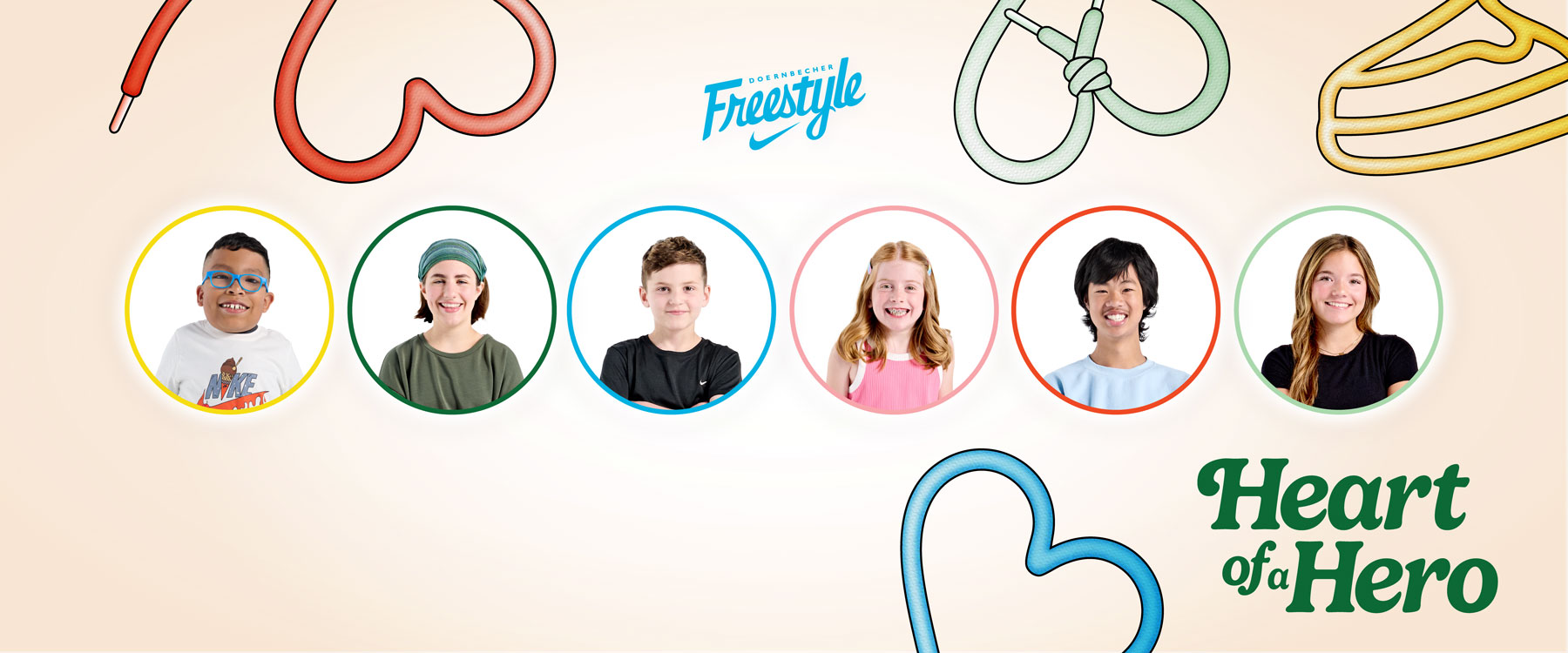Five-year-old Hawk Lamb is autistic and struggles to use language in a conventional way, but he’s an excellent communicator.
“He’s a lot like his mother – very direct and persistent. Whatever it is he wants, he will figure out how to make it happen,” said Hawk’s father, Nate Lamb.
Hawk’s natural persistence combined with his family’s support and work with experts at OHSU Doernbecher Children’s Hospital has made it possible for Hawk to move from isolation and frustration to interacting with the world in new and often joyful ways.
Hawk was about 15 months old when his parents, Dowry and Nate Lamb, started to notice that words weren’t coming as easily for him as they had for his older siblings, but they didn’t worry. It wasn’t until they attended a family wedding that they realized they needed to find out more.
“We went to a wedding down in Central Oregon. Dowry’s older brother was there, and he’s an educator with experience working with kids on the spectrum. He saw some signs that made him think it would be worth testing Hawk for autism,” said Nate.
“It was a shock, at first,” said Dowry. “We had no idea. We did a lot of research very quickly.”
Among other things, Dowry learned that, while medications may improve symptoms in some children, the most effective interventions are therapy-based and include speech and language, sensory integration, social skill training and behavior intervention or modification. The research is also very clear that, the sooner you can start, the better.
“Now, he routinely kisses me and hugs me, which is absolutely incredible. Hawk has taught us so much – that’s the beauty of this journey.”
Dowry Lamb, Hawk’s mother
Armed with new knowledge, the Lambs went to see Hannah Sanford-Keller, M.S., CCC-SLP, a speech pathologist who works through OHSU’s Institute on Development and Disability and Child Development and Rehabilitation Center (CDRC). Hannah said she could start working with Hawk right away, even as he went through more testing to confirm the autism diagnosis. She also told them she was confident that, with early intervention, they could significantly improve his communication, play, and engagement skills.
“When I first met the Lamb family, they came to me for a general speech and language evaluation. What I really appreciated about the visit was that they were so honest about the strengths that they saw in Hawk and their concerns,” said Hannah.
“Hannah set a positive tone right from the start,” said Dowry. “It was the way she spoke about being neurodivergent, what it means. She told us there were many families out there going through the same thing and provided the baseline information we needed to make sure that Hawk could progress to the best of his ability. That really set the pace for us as a family. It felt more empowering than gloomy.”
Hawk and Hannah
Hannah started coming to the house to work with Hawk once a week. Each visit included exercises for Hawk and activities the family could carry on throughout the week.
“Pretty quickly, I noticed that it wasn’t just the use of words that was challenging for Hawk, it was also hard for him to interact with people. The things that were capturing his attention were usually objects, rather than the people who were in the room. He liked to put those objects into patterns, or line them up or stack them up,” said Hannah.
“He would laugh hysterically and begin to recognize that the words were associated with an action.”
Dowry Lamb, Hawk’s mother
“And so we started asking, How can we mirror him or model activities related to the things he likes, to get his attention and create that bridge and connection that will help him communicate with other people?”
Dowry and Nate knew that Hawk loved water, for example, so Hannah created an activity based on that insight. Hannah would put Hawk in the kitchen sink and let him play and explore. And then she would turn the faucet off and wait for him to look at her or vocalize or otherwise indicate that he wanted the water back on. And once they had established that connection, they built on it.
And then there were the people games.
“Right from the beginning we introduced a consistent verbal routine that went along with what we called people games – activities that involve interacting with another person. We would say ‘Ready, set, go!’ and start to tickle him, which he liked. Or blow bubbles. He would laugh hysterically and begin to recognize that the words were associated with an action. And pretty soon he started to imitate the sounds of ‘ready, set go.’”
“He worked so hard,” said Dowry. “Now we can prompt him. He knows to anticipate that something’s going to happen when we say ‘ready, set, go!’ We find ourselves using it to mean a lot of different things. It’s versatile!”
Hawk wasn’t the only one working. Dowry, Nate and Hawk’s three siblings all played an important role.
“The whole family got involved in Hawk’s activities. His younger brother would imitate the words we were working on, and his older sister would play the tickle game with him. The way that the whole family showed up to support Hawk was really unique and nice to see,” said Hannah.
Hannah worked intensively with Hawk and his family for four years and now he’s in kindergarten full time, attending a special classroom at their local public school. Dowry and Nate met recently with Hawk’s teachers and were pleased to learn that Hawk was making tremendous progress.
“Hawk’s school team was very confident that he was ready for more independence, based on the progress he made this year,” said Nate. “It’s more than we could have imagined. We have to shine a light on his educators, because the work they put in. Hawk’s success is a product of that work. We obviously realize that he might have to work a little bit harder than your average child. But he’s going to get there.”
Hawk is anything but withdrawn and isolated these days. “One of the biggest fears I had, when he was a child, was that he wouldn’t be able to show or receive physical affection,” said Dowry. “But now, he routinely kisses me and hugs me, which is absolutely incredible. Hawk has taught us so much – that’s the beauty of this journey.”
“The most joyful moments for me are when I see a child who used to play independently learn to enjoy activities and games with other people,” said Hannah.
About the CDRC
In addition to working directly with Hannah, Hawk has seen a variety of specialists based at OHSU’s Child Development and Rehabilitation Center (CDRC). He was evaluated at their autism clinic, saw a developmental pediatrician, an occupational therapist, and a speech pathologist. The family now works closely with Katherine Zuckerman, M.D., M.P.H., a Doernbecher pediatrician and researcher who specializes in working with autistic children.
The CDRC is the clinical services arm of the Institute on Development & Disability, which also includes research and student training. The CDRC’s autism clinic helps hundreds of families every year to get the diagnostic and support services they need to help their child reach their full potential.




